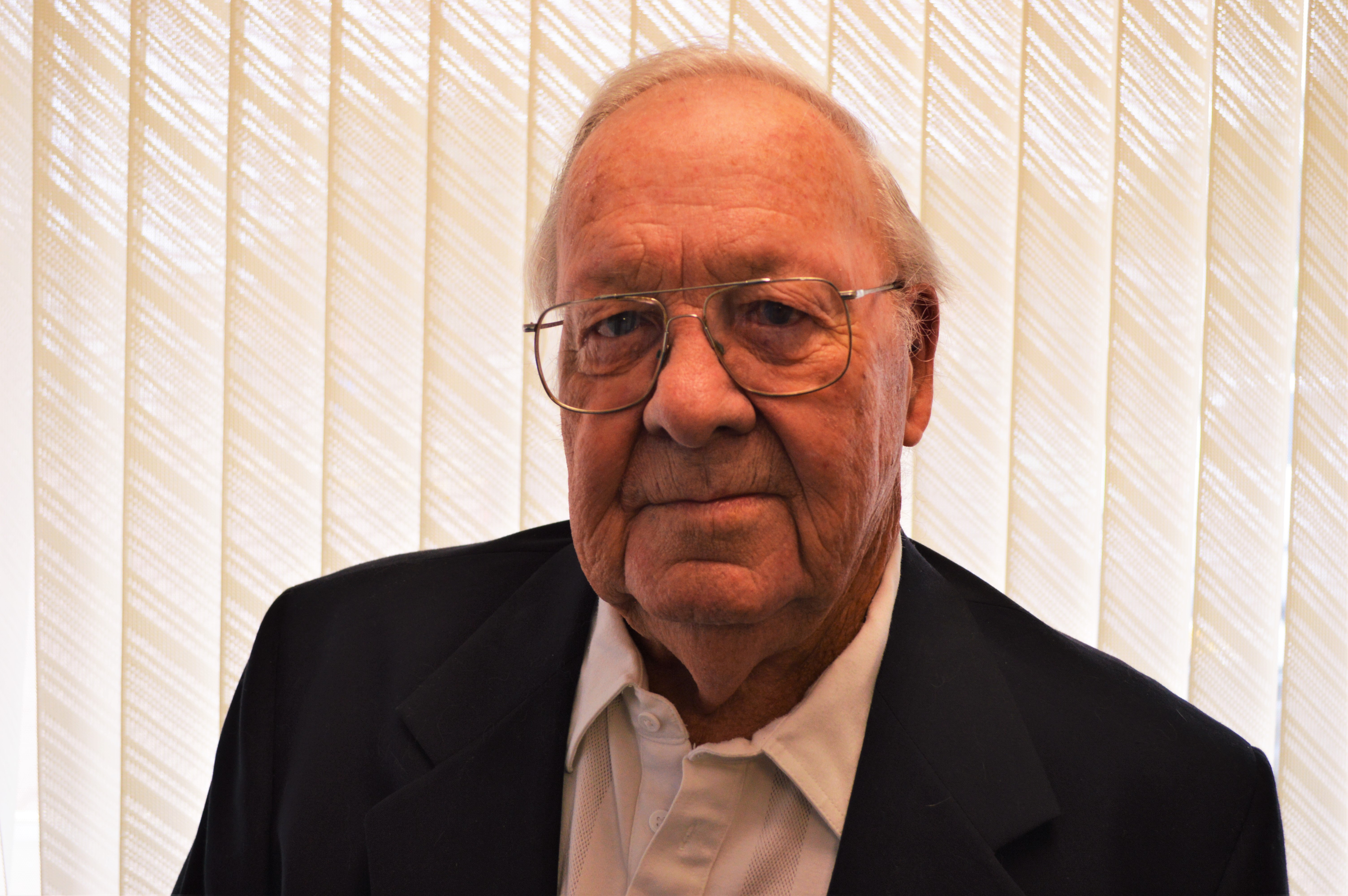
Click to play the audio or read below.
I don’t think I’ll ever forget that Halloween morning in 1939! It must have been a Saturday or Sunday because Max and I were still in bed when normally we would have been in the barn at that time of day.
I awoke when Mom called from the bottom of the stairs to get up and look out the window. Max and I could hardly believe what we saw! There was a solid white blanket thrown over the entire landscape. The drifts of sand formed from summer winds and the blankness of the entire world had been transformed overnight by Mother Nature, and everything was white!
Actually, snow was not that unusual in Southwest Kansas, even during the Dust Bowl days, but this early in the season? I think not.

On this special morning, there was not a breath of wind, and so the very light snow lay precisely where it fell. The earth was suddenly beautiful again! It was one of the earliest snowfalls in that area for years. ”Snow, snow, beautiful snow” as the song goes. Over the years, snow has been cast as a savior or a troublesome nuisance, depending on where you are and what you do for a living.
Dirt farmers almost always love it because it protects the tender crop of growing wheat from sub-zero temperatures. Ranchers don’t particularly care for it to fall on their livestock, but they love the moisture on their grazing areas. And city folks would just as soon it didn’t happen, except of course at Christmas. Heavy blowing snow, or blizzards, are unfriendly to almost everyone, but seldom does a winter season pass by without at least one such adventure.
I live in Northwest Kansas now, and we’re still awaiting any kind of a snowfall that measures more than 2 or 3 inches so far this winter. Average-wise by this time, we’ve usually received close to 17 inches by now, but a total of only 9 inches has fallen. But we are all aware that surely there will be a blizzard before May 1st. My family ran into a bad situation in early March of 1948 when we were returning from Dodge City to our farm following the semi-finals of the Regional basketball tournament.
We got “high centered” in a snow drift just a half mile from home north of Bucklin and chose to walk the rest of the way, with a fence line to guide us. We were dressed very warmly, but it was a tough go. And then there was March 26th and 27th in 1957, when my young family lived in Hays.
A bunch of us radio employees had gathered at Don Treu’s 2- story house way out on North Hall street to listen to the KU-North Carolina NCAA Championship game on the radio. We had to go upstairs to listen because the signal was too weak downstairs. Wilt Chamberlain and KU lost, and by the time the game ended, there was a terrible blizzard raging.
My wife and I were barely able to get the half mile home. Some 26 inches fell during that 2-day storm. I took pictures of two year old son Marty climbing up on a snowdrift as high as the eave of the house. This was before Interstate 70 was built, and automobile and train traffic was halted for days. Don Treu’s house still stands.
The month of January 1911 was memorable in Tamarack, California, in the Sierras when a record total of 390 inches of snow fell, just in January! Snow depth at that point in the season was 767 inches, or 64 feet, also a record. The area is located several miles south of South Lake Tahoe. Snowballs, snowmen, snow shovels….all are signs of the season.
All are welcome, just as long as they’re all gone by garden planting time!
Kay Melia is a longtime broadcaster, author and garden in northwest Kansas.

